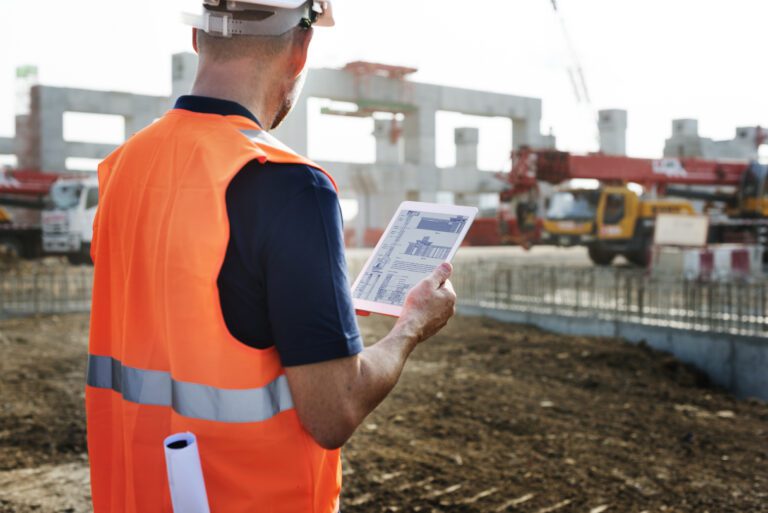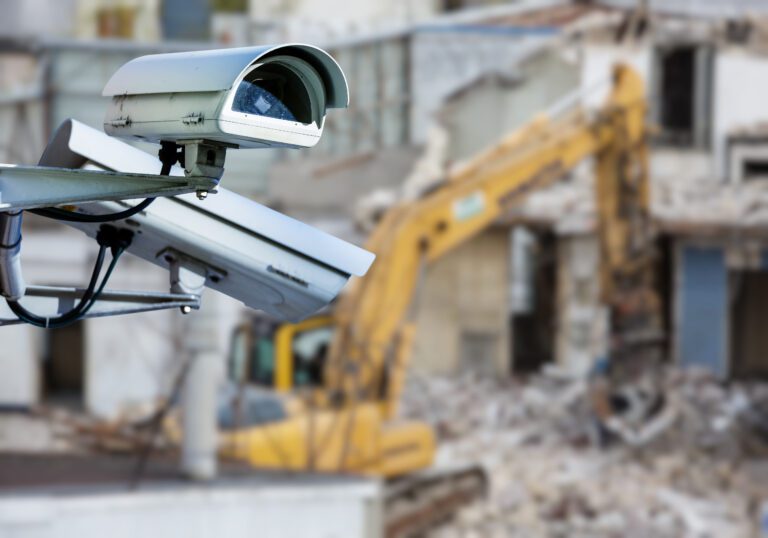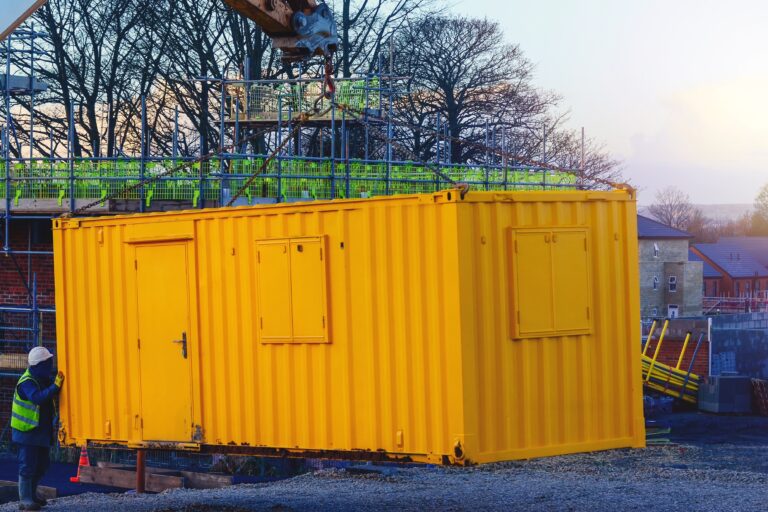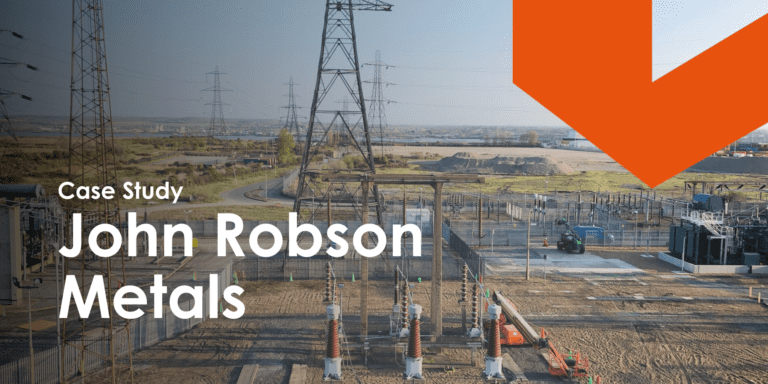8th December, 2023
AI, Digitisation, and the Construction Industry
Adopting AI in the construction industry can streamline procurement, support green mandates, and engage younger generations.
The construction industry accounts for approximately 7% of the gross domestic product (GDP) in the UK, which translates to over £110 billion per annum. Given the size and impact of the construction industry, you would be forgiven for assuming that the digitisation of construction is underway. But, this is far from reality.
AI in the construction industry is still controversial. 65% still use manual methods, such as spreadsheets or pen and paper, to manage their procurement processes and site inventories. Doctors streamline surgeries by implementing AI-generated recommendations and solicitors use software to process loan applications, but construction professionals have yet to catch up. Whilst other sectors enjoy the benefits of digitisation, construction contractors continue to write checklists on pen and paper,
Digitisation In the Construction Industry
The digitisation of the construction industry is long overdue. In a recent study entitled “The True Cost of the Construction Supply Chain”, YardLink surveyed over 250 senior procurement managers and found that 31% of respondents identified a lack of digital tools and innovation as the most significant challenge they face in today’s construction landscape, with the inefficient nature of analogue communication between teams significantly contributing to the problem.
Digitisation can handle the entire procurement, ordering, and tracking process. For some, digitisation is a no-brainer. For others, digital risk assessments and auto-suggestions are too far removed from traditional manual methods. AI, also known as Artificial Intelligence, is the next step in digitising construction processes. Machine learning has the ability to streamline pre-construction, optimise procurement processes, predict safety risks, support green initiatives, and much more.
Problems in the Construction Industry
By implementing digitisation in the construction industry, site managers and procurement officers can tackle two points of contention – cost and time overruns.
The cost of construction materials rose by 24.5% in 2021 and 15% in 2022, which is in stark comparison to the 1% decrease in 2019. These statistics give a small insight into the scale of the price hikes in recent years, but they do not scratch the surface. Construction contractors also have to consider the rising cost of labour and equipment.
It’s speculated that the average construction project overruns anywhere from 10-50%. Regardless of the actual number, the stereotype that construction projects always run over schedule rings true. On top of that, legacy inefficiencies are responsible for a staggering £7.6 million in overruns, another massive roadblock to progress and profitability.
Researchers at nPlan found that projects completed before the pandemic had a median delay time of 100 days, whereas projects completed during the pandemic had a median delay of 200 days. The pandemic has accelerated the existing issue of time-keeping. Without intervention, the construction industry will collapse under the weight of its ineffective systems.
Overall, the construction industry is the least digitised sector in Europe. The lack of technological innovation in the construction industry costs the global economy $1.6 trillion annually. Forward-thinking contractors and project managers are looking toward technological advances as a way to recoup productivity and profits.
Benefits of AI In the Construction Industry
So, how can AI be used in construction to solve the problem of cost and time overruns?
According to AutoDesk Construction Cloud, 35% of construction professionals spend time on non-productive activities. This statistic is mirrored in many journals, surveys, and even YardLink’s recent study.
The consensus is that construction professionals must streamline each stage of the construction process as much as possible. AI is a valuable tool for construction professionals who want to improve communication between teams, increase productivity, and streamline processes.
Let’s look at some of the ways that AI can save construction professionals time and money.
AI Streamlines Pre-Construction
The digitisation of construction could not come at a better time. Project managers, architects, and construction contractors are under massive amounts of pressure to follow increasingly complex building regulations, laws, and restrictive covenants.
Pre-construction can be just as complex as the construction phase, but AI can help contractors navigate their long list of obligations.
- Building Information Modelling (BIM) – BIM uses AI to create 3D models that allow construction contractors to visualise their buildings and anticipate potential errors before they become costly mistakes.
- Design comparisons – AI can use existing data to predict the functionality of specific designs. Contractors input their time and money constraints, and AI directs them to the most effective, viable design.
- Potential delays – AI algorithms can predict potential delays and suggest adjustments, ensuring projects stay on track. Subcontractor schedules, compliance considerations, and weather conditions can all delay construction projects. But when AI enters the mix, these problems are immediately apparent and no longer have the power to derail a project. Contractors who invest in this kind of pre-construction AI tool can enjoy optimised resource allocation, reduced costs, and timely project deliveries.
By streamlining some of the most essential pre-construction processes, digitisation can reduce overall costs and keep construction projects on track.
AI Predicts Safety Risks
Digitisation in construction is not all about admin. AI can have a tangible impact on day-to-day operations, especially safety procedures. According to the Health and Safety Executive (HSE), workplace injuries and work-related ill health are costing the construction sector more than £1.29 billion each year. There is a desperate need for a solution, and AI ticks all the boxes.
Construction contractors and project managers can use AI in conjunction with on-site sensors and cameras to capture, track, and analyse real-time safety risks. If project managers want to take AI one step further, they can invest in predictive analytics.
Suffolk Construction is a Boston-based construction company that partnered with Smartvid.io to create one of the first AI-based risk assessment systems in the construction industry.
As part of this project, Smartvid.io used an AI named “Vinnie” to analyse photos from Suffolk Construction’s sites. Vinnie instantly analysed thousands of photos to generate compliance statistics and an early warning system.
Here are two of the safety hazards that Vinnie was designed to spot.
- If Vinnie received a picture of labourers pouring concrete, it analysed whether the workers wore the correct PPE.
- If Vinnie received a picture of labourers drilling concrete, it checked for ear defenders and other protective gear.
In the three years that followed, Smartvid.io’s early warning system predicted 20% of all incidents with an 80% accuracy rate. Suffolk Construction estimates that this system can guarantee somewhere between $1.4M and $3.6M in safety-related savings each year, even with the occasional false warning. It is important to remember that these are U.S.-based statistics, but the system can easily translate to construction projects in the UK.
When we talk about digitising construction, we often think about text-based solutions. However, Suffolk Construction has proven that AI is a collaborative tool that has the power to predict the future.
AI Supports Green Initiatives
Green building rating and certification systems are becoming the norm. The UK Green Building Council (UKGBC) encouraged more construction companies to sign up for the UN Race to Zero than any other country. Decarbonising the construction supply chain is one of the central points in the government’s Net Zero guidance note, so it is no surprise that contractors and sub-contractors are under immense pressure to meet green mandates and reduce emissions at every stage of the construction process.
In theory, AI can be used to streamline every step of the construction process. This falls under the umbrella of “smart building”, a new field that utilises AI in the construction industry. As one study put it, AI can “generate innovative architectural and structural designs, improve construction and operational safety, reduce the embodied and operational energy requirements, reduce construction and operational costs”, among other things.
Contractors who want to support green initiatives can implement intelligent lighting systems that operate on AI algorithms. The algorithm notices when spaces are unoccupied and either dims or turns off the lights. Similarly, predictive Heating, Ventilation, and Air Conditioning (HVAC) systems can effectively regulate energy usage, ensuring occupants only use as much as necessary.
AI Supports Resource Management
The digitisation of construction has had a big impact on resource management. Before the advent of AI, construction professionals felt the frustration of ordering too many materials or assigning too many labourers to a task. By utilising the pattern recognition powers of AI, procurement managers can drastically reduce their expenditures and almost eliminate waste.
Procurement managers can feed historical data into predictive analytics algorithms to find the most cost-effective, reliable resources in any given area. They can also use AI to supercharge their resource allocation efforts.
Taskade is just one of the AI-driven resource allocation tools that focuses on the construction industry. It is designed for project managers who want to assign the necessary resources to essential tasks, without over or underestimating the need for materials, personnel, or equipment.
AI Appeals to the Next Generation
65% of the construction procurement managers that YardLink surveyed in a recent study are still using manual methods to track their projects, orders, and progress. If this trend continues, and digitisation is not prioritised, the construction industry will alienate future generations.
A recent study by regulator Ofcom found that Gen Z is driving the early adoption of Generative Artificial Intelligence (GenAI), a type of AI that can produce multiple mediums (text, images, graphs) in response to dialogue inputs. In fact, 79% of online users aged 13-17 use GenAI, and 40% of 7-12-year-olds also use the technology.
By the time Gen Z enter the workforce, they will expect AI in the construction industry. Can you imagine the next generation using pen and paper to document large-scale construction projects? It does not seem likely.
If manual methods and processes can continue uninterrupted, the construction industry will seem like an archaic option compared to other, more technologically advanced sectors.
Conclusion
The construction industry is on the cusp of a revolution. By replacing more traditional modes of procurement, management, and design with AI, construction contractors can reduce costs, save valuable time, and support the government’s Net Zero goal.
Embedding AI into the construction industry might be difficult, especially because most construction professionals still use outdated systems. However, all-in-one platforms like YardLink pave the way for construction professionals who want to take a bold leap to align themselves with the modern digital world.
YOU MIGHT ALSO BE INTERESTED IN















